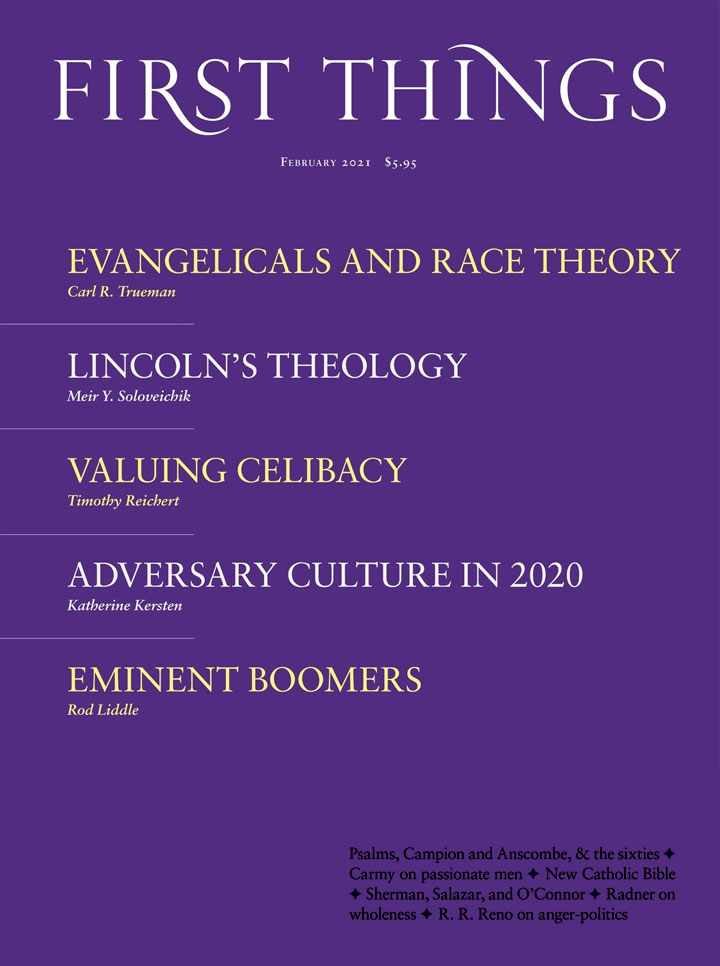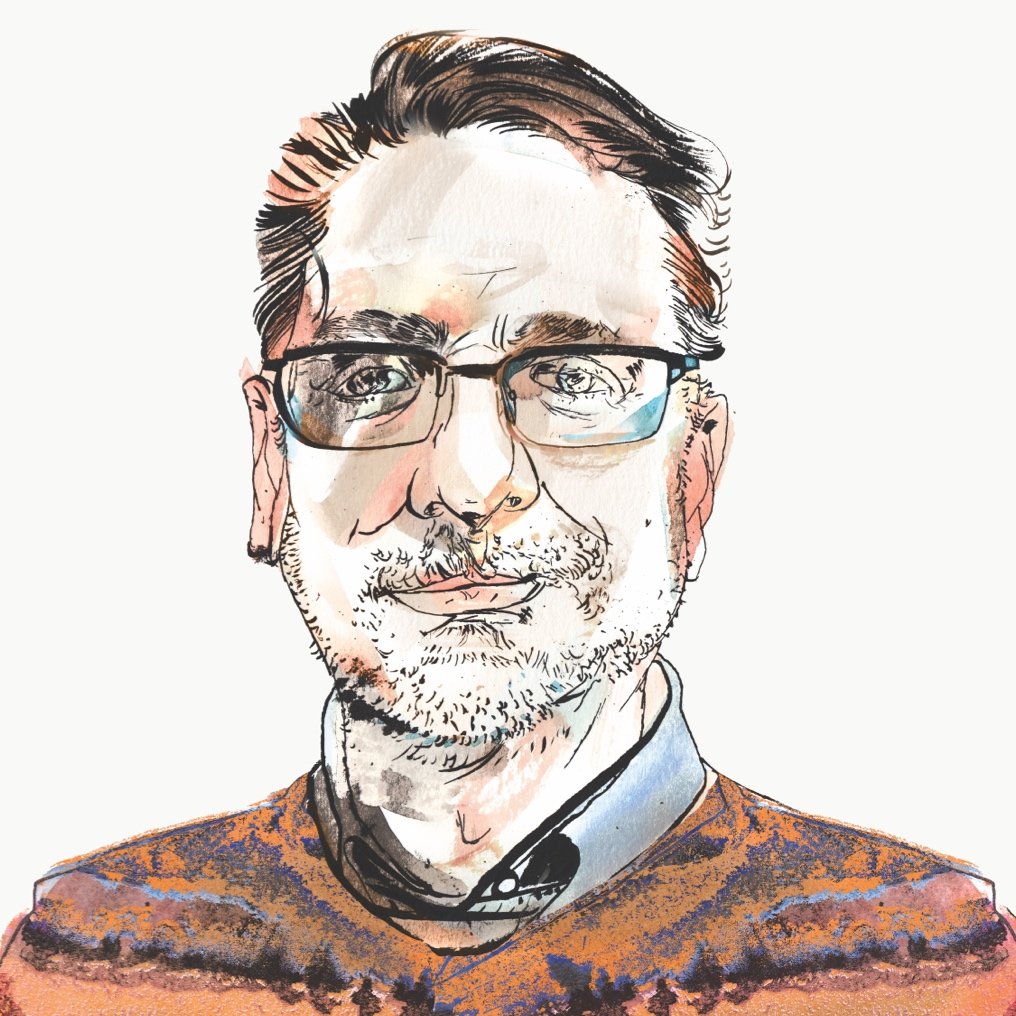A few years ago, I visited Albi, a small town in southern France famed for its Cathedral of Saint Cecilia. Constructed of the rose-colored brick typical of the region, the building was begun in the thirteenth century, about a hundred years after the Albigensian Crusade against the region’s Catharist heretics. Rising above the Tarn valley, the cathedral, a strange and phantasmagoric structure, glows in the morning light like a beacon from beyond.
On the day of my visit, tourists stand inside in slow-moving lines. Many are here to see the cathedral’s most remarkable interior feature, a huge late-fifteenth-century fresco of the Last Judgment. It is a floor-to-ceiling extravaganza behind the main altar, depicting layers of naked bodies rising from the ground, each carrying the book of his life’s accounting, onward to hell or heaven. Below them are scenes of agony and torture, organized according to the seven deadly sins, and painted with care by unknown Flemish artists who seem to have been fascinated, like Hieronymus Bosch, with the repetitive power of pain. Above, images of the heavenly host are harder to make out. The display is disconcerting and overwhelming. Denuded bodies—stripped of all their individuality, all marks of human relationship—drift in an airless world, somewhere between our present existence and some drastic but unrealized promise.
Jostled along by the queue that crosses before the fresco, no one knows quite what to do with these images. In front of me are a young father and his son, for whom the scene seems impenetrable. The boy keeps asking questions, which the father sputters to answer. “Who are these people?” “Dead people.” “Where have they come from?” “I’m not sure.” “Do they know each other?” The child points to the mass of exposed figures floating toward their destinies. “I don’t know,” the father replies. Then the boy asks, “Who’s in charge?” and the father, with only slightly more confidence, says, “God, I think.” The child asks, “Where is he?” There is no reply, and the line moves us on.
Where is God? The fresco offers no answer. A central image of Christ the Judge originally marked the apex of the fresco. It was removed in the late seventeenth century so that a large arch leading to an inner sanctum could be placed behind the altar. Christ’s absence intensifies the horrifying deracination that pervades the scene. His removal was, in any case, a strange decision. What sense does the scene make without the Redeemer as Judge, sorting out the tangled mess of our experience?
At the time of its mangling, the fresco had apparently become obscured by smoke and grime. And at that time the very idea of a coherent world, embraced by God’s ordered purpose, was beginning to fade. We seem to live on the far side of that dimming vision. Do we have any sense of the supervening power of God, which orders the affairs of men and ensures the defeat of evil and the triumph of good?
In the early eighteenth century, the Anglican clergyman and philosopher Joseph Butler sought to invigorate our sense of God’s gracious governance. He opposed the so-called Deists (a pervasive and often unsatisfactory label for Enlightenment-era deviations from orthodox Christianity). Deists may well have believed in a God, but only in one who set things in motion, offered moral instruction, and left the rest to us. Such an approach to God and his involvement in our affairs can easily turn us toward confusion and despair—or toward fevered efforts to remake the world, the temptation of modern ideologies. We do what we can, and then, who knows? What we are left with seems either terrifyingly brutal or confused, either “theoretical” or elusively personal. In the Deist vision, Jesus may be a good teacher, but he is not the Lord of history.
In The Analogy of Religion (1732), his masterpiece, Butler argues for the reasonableness of believing in God’s sovereign care, order, and judgment. The shape of our life in this world—in “nature,” as Butler puts it—supports, by analogy, the main tenets of Christian faith. There is a master plan, as it were, evident even in the smallest compass of our lives, and seeing that this is so opens us to the gracious reality of the Master Planner.
These arguments were once well-known and compelling. John Henry Newman used them to construct some of his most imaginative descriptions of how we come to faith. Newman invites us to consider that we work, love, feel loss and regret, and seek renewal—and to understand that these responses are fitting, even though we are ignorant about so much that surrounds us. We rightly move forward in life, although we cannot see how everything will work out in the end. The cumulative joys, energies, and deeply felt meanings in our lives alert us to their underlying purpose, the specific contours of which we properly accept on the authority of God’s revelation. Reason alone cannot sort out the jumble of life, but it is reasonable to trust in God to do so, for that trust allows us to live in accord with our humanity.
Deism was once an elite perspective. It now seems the default view. Since God is not active, governing the affairs of men and standing in final judgment, we must find our own resolutions to our worries. Is it any wonder, then, that the past few months have been a factory of anxiety for many of us, turning out new worries with every news cycle? Amid disease, economic hardship, family separations, church closures, social conflict, and endless political debate, turmoil, and partisan maneuverings, we imagine we can sort it out if we but read enough news reports, scientific studies, and web posts. We have discovered the taut limits of our efforts. Everything counts so terribly, but nothing adds up. In all of this I have wondered whether, having long ago lost Butler’s calm but living sense of being enrolled in a master plan, we have not simply consigned ourselves to a frantic and fruitless search for some small means—or grand, all-explaining theories—to save us from our clouded future.
In this we will not succeed. How can we possibly establish a proper, stable, and just harmony between our preferential love for our children and our duties to strangers? Friendship, devotion, and loyalty are always focused. By what Herculean efforts can we bring them into accord with morality’s universal scope? And the evil that infects our relationships and institutions? Is it in our power to break its tenacious hold? As questions like these—often unarticulated, but deeply felt—press upon us, we are inclined to panic, pulling therapeutic, political, and technological levers to ensure that everything comes out all right. These solutions can do some good, but never enough.
Butler’s deepest point is that trust, not problem-solving, is built into the fabric of common life. He might have answered the boy in the cathedral with his characteristic gentle force: “You may not be able to calculate or prove the ultimate coherence of life, my young friend, but you can trust in it. Be faithful to those around you, serve your Lord, and write your life, whatever it is, in a book that you can take to God: He will make sense of its story. That’s what the great company of naked bodies is moving toward.”
I imagine life is no more challenging for us today than it was for the faithful of Albi who gazed on the great cathedral fresco when it was still unmutilated, depicting Christ and his angels holding all human bodies together in their progress from worldly life, to death, to God. Disease was more vicious then, material hardship more brutal, family relations more vulnerable, the church’s life more fraught, and social and political conflict more violent than anything we see around us now. For all that, they seem to have understood the force of the twenty-first-century child’s question: Do all these men and women, who pass through life, know each other in the end? The people of Albi grasped, as we do today, that the human person aims at companionship, friendship, covenant, and trust.
What they knew as well, and what we seem to have forgotten, is how these relationships themselves, not the solutions we propose for the world’s struggles, constitute our success in actually knitting things together. Fragile though these local forms of common life may be, in their small engagements and satisfactions they point to God’s great ordering of our lives. According to the contemporary Pierre des Vaux-de-Cernay, the twelfth-century Albigensian dualistic and anti-materialist presuppositions denied the Resurrection altogether. By contrast, the cathedral’s fresco conveys a certainty about the One God’s control of all life and death in a single sweep—such that this fleshly life, and the resurrected existence of the next, must be, as it were, of “one piece.” The Lordship of Christ—creating, leading, gathering, and judging—graciously enacts the divinely granted wholeness of our lives. When parents can teach their children this again, they will once more reknit the world in hope.
Ephraim Radner is professor of historical theology at Wycliffe College.
Photo by Pom² via Creative Commons. Image cropped.
In Praise of Translation
This essay was delivered as the 38th Annual Erasmus Lecture. The circumstances of my life have been…
Work Is for the Worker
In these early days of his pontificate, Pope Leo XIV has made one thing clear: The responsible…
Goddity
The Nativity of our Lord—born an infant, laid in a manger. It’s an utterly strange story: The…



